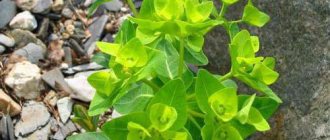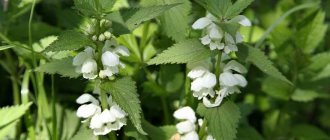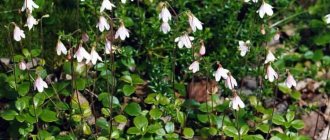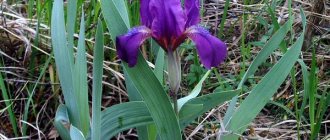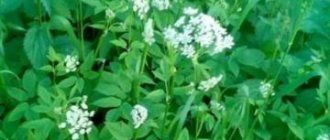Thistle is a weed for most gardeners. Not everyone knows that the plant has a huge amount of useful substances, the effect of which is different for each system in our body. Some pharmaceutical companies use thistle in medicines.
Ancestors also believed in the magical power of the plant, and in some villages the dried bouquet still serves as a talisman in their homes.
Description of culture
Thistle is a perennial herbaceous plant. Belongs to the Aster family (Asteraceae). The root system is taproot type. The main root reaches a length of up to 0.5 m and is conical in shape. The height of the vegetative part of the plant is from 60 cm to 2 m. The stem is powerful and straight.
The leaves are spreading, dark green in color with light veins. There are spines along the periphery of each leaf.
The size of the flowers is from 3 to 8 cm. The inflorescence is a basket. The color of the petals ranges from light lilac to deep purple. Around the flower the leaves look like dense spines. The achene-type fruits are gray, brown or black. Each seed has a tuft of long hairs.
Coat of arms of Scotland thistle
Thistle grows in Eurasia and northern Africa. The plant is native to Western Europe. Culture is a national symbol of Scotland. The thistle is depicted on the country's coat of arms and honorary order of knighthood.
Interesting facts about thistle
In ancient times, thistle was used not only for healing and cooking, but was also used in various rituals. People believed that this medicinal plant could drive out evil spirits both from humans and from homes. Based on this, they hung a small bouquet of these flowers above the door at the entrance so that evil spirits would not enter the house.
If it was believed that if a sorcerer died in a village, then thistles were necessarily planted on his grave so that he would not rise from the grave.
In ancient times, an amulet was created from thistle flowers. It was believed that if a person's hair was wrapped around a flower, it would protect him from evil spells directed against him.
The benefits of milk thistle - expert advice
We also recommend reading - Brugmansia
Varieties and varieties
The Thistle genus includes about 130 species, but only a small part is used in medicine and cosmetology. The culture can be found on roadsides, meadows and forest edges. This is an unpretentious and drought-resistant plant.
The most popular varieties are:
- Prickly (Spiky);
- Curly;
- Small-hooked;
- drooping;
- Small-headed;
- Hooked.
Hooked thistle
Kinds
Milk Thistle Milk thistle is a type of thistle that you can plant yourself.
Currently, there are about 130 species of this plant. But only some of them have medicinal properties and are used in folk medicine.
- Milk thistle - since this plant is classified as a weed, it can be planted where it is convenient for the gardener, as long as the place is sunny. It is planted mainly along the fence, creating a hedge from this medicinal plant.
- Curly thistle is a herbaceous plant that grows no more than a meter in height and has an erect stem. The leaves and flower baskets have sharp spines. It differs from the tartar in that the leg of the basket is very elongated, and it does not have spines. The whole of Western Siberia is considered its homeland.
- Drooping thistle - this plant grows up to one meter in height, the stem is weakly branched. Baskets with flowers do not have thorns. The leaves vary in length along the entire height of the stem. The lower ones reach 55 cm in length, and the upper ones are only 6 cm.
Useful properties of the culture
When properly collected and stored, thistle is distinguished by a rich range of substances beneficial to humans:
- Silymarin has a pronounced hepatoprotective effect. It is this component that affects metabolism in the liver, flushing out all toxic substances from the organ.
- Saponins are substances that have an anti-inflammatory effect.
- Bioflavonoids are natural antioxidants.
- Essential oil is found in large quantities in the seeds of the plant. Widely used in cosmetology.
- Tannins strengthen the walls of blood vessels, bind and remove heavy metals and toxins from the body.
- A whole range of acids: citric, oxalic, malic, glycolic, malonic.
Together, all plant substances are well absorbed by the body and have the following effects:
- anticonvulsant;
- choleretic;
- antidepressant;
- anticonvulsant;
- restorative;
- diuretic.
It is worth noting that thistle is attractive to bees. Honey obtained from the plant strengthens the immune system and tones the body.
Use in folk medicine
All parts of the plant are used in folk medicine. In dried, crushed form, thistle is added to tea mixtures. The drink is drunk for bronchitis, menstrual pain, general malaise, and problems with urination.
The seeds are used in the form of crushed powder. This remedy restores liver function and improves the flow of bile from the gallbladder. Decoctions from the seeds are taken for vascular diseases in the legs.
Infusions from the root part of the plant help with diarrhea, cramps, and problems with urination. Decoctions are used in cancer cases.
Dried crushed thistle flowers are drunk in the form of a decoction for insomnia. Traditional healers use such solutions to treat various nervous manifestations in children (fear, enuresis, sleep disorders).
Freshly squeezed juice from the vegetative parts of the plant has a powerful wound-healing effect. Used internally to treat gout, rheumatism and tetanus
Medicinal properties of milk thistle
Milk thistle is famous for its numerous medicinal properties, thanks to which it is widely used in folk medicine. In the field of pharmacology, the seeds, roots and leaves of the plant are most often used. They are presented in the pharmacy chain in the form of capsules, powders, tinctures and dry crushed raw materials.
Thistle - beneficial properties and contraindications:
Attention! People make good money growing berries during a crisis. All information is here
- has a mild laxative and diuretic effect, helping to get rid of swelling;
- inhibits inflammatory processes;
- helps relieve signs of intoxication in the body;
- accelerates the production and outflow of bile;
- has an immunostimulating effect;
- helps with pancreatitis, gastritis and chronic colitis;
- is an excellent prevention of cancer;
- stimulates skin regeneration after various injuries and damages.
The main property of thistle is the treatment of various liver diseases, as it has pronounced hepatoprotective properties. Milk thistle effectively strengthens and restores liver cells, accelerates metabolism within it, and reliably protects the liver structure from the negative effects of toxic substances. The plant is recommended for use in cases of liver cirrhosis, hepatitis, and jaundice.
Indications for use of thistle
In complex therapy, the medicinal properties of thistle have a beneficial effect in the following pathologies:
- Liver diseases (hepatitis, cirrhosis);
- diseases of the gallbladder and biliary tract (cholecystitis, atony of the gallbladder, cholelithiasis);
- diseases of the gastrointestinal tract (gastritis, gastroenteritis, constipation, hemorrhoids);
- spleen diseases;
- nervous system disorders (neuroses, insomnia, depressive states);
- diseases of the urinary system (cystitis, edema);
- skin lesions (burns, rashes, inflamed and non-healing wounds);
- diseases of the respiratory system (bronchitis, tuberculosis);
- gynecological problems (menstrual irregularities).
What does thistle cure?
Bluehead is considered a safe and effective folk treatment. Since ancient times, a lot of magical properties have been attributed to it. In addition, the plant is classified as a honey plant. Bee products obtained from its pollen have a huge number of beneficial properties. Thistle is most effective against the following diseases:
- bronchial asthma;
- haemorrhoids;
- laryngitis;
- liver diseases;
- cystitis;
- gout;
- convulsions;
- disorders of the nervous system;
- allergic diseases;
- radiculitis;
- cholelithiasis;
- cardiovascular pathologies.
Very often, thistle is used to normalize liver function. It protects organ cells from harmful toxins and has a choleretic effect. Doctors often prescribe it to people suffering from alcohol addiction and hepatitis.
The juice of the plant is often used to treat purulent wounds and boils. When taken internally, it has a positive effect on the functioning of the cardiovascular system. Thistle is often used as an antidepressant.
We recommend reading: Cyclamen: medicinal properties, indications for use, photos
Beneficial properties of thistle for men
Men often use bluehead in the fight against urological diseases. Decoctions prepared from this plant have diuretic and anti-inflammatory properties. Thistle is able to remove stones from the body and normalize kidney function. In addition, the plant is highly effective against erectile dysfunction. The substances included in its composition reduce inflammation and improve blood circulation in the pelvis.
With regular use, the plant significantly increases the strength of blood vessels
Attention! In cloudy weather, the plant’s spines are pressed against the bud, and in warm weather they “look” to the sides.
Useful properties of thistle for women
Due to its ability to protect the liver from toxins, thistle is often used during the use of hormonal contraceptives. The substances that make up the plant neutralize the harmful effects of harmful components. Another useful property is the normalization of the nervous system. This is especially true during the premenstrual period.
During breastfeeding, thistle is used to increase milk volume. The plant stimulates the production of prolactin, which has a positive effect on lactation. Often women use a medicinal plant to eliminate subcutaneous acne.
Thistle medicinal recipes
All dosage forms can be prepared at home. The method and frequency of application depends on the pathology, age and weight. Therefore, the dosage is selected individually for each specific case.
Infusion
- 4 tablespoons of dried chopped greens of the plant are poured into 1 liter of boiling water;
- leave to infuse for 2 hours;
- the infusion is filtered through cheesecloth.
Decoction
- 1 tablespoon of dry thistle components is poured with a glass of boiling water;
- place in a water bath for 30 minutes;
- remove and leave to infuse for 15 minutes;
- the solution is filtered into a clean container.
Milk thistle decoction
Syrup
- add 2 teaspoons of sugar to 1 tablespoon of dry product and pour a glass of boiling water;
- Place in a water bath and heat until the volume of liquid is reduced by half.
Juice
The juice is squeezed directly from the fresh leaves of the plant. Use internally or externally.
Thistle juice
Use of the plant in cosmetology for face and body care
Thistle is widely used in cosmetology due to its rich vitamin and mineral composition. Oils are obtained from the plant that have the following properties:
- wound healing (promotes tissue regeneration);
- moisturizing;
- anti-aging;
- helps relieve skin inflammation;
- improves skin microcirculation.
Thistle oils are applied to the skin for the following diseases:
- psoriasis;
- acne;
- eczema;
- burns (chemical and thermal);
- dermatitis;
- allergic skin reactions (urticaria, peeling).
Application in cosmetology
Thistle is used in medicinal cosmetics for hair, face, nails, eyelashes, and eyebrows. Plant raw materials contain a large amount of vitamins, minerals, amino acids, and antioxidants.
The tools are used to solve the following problems:
- rejuvenation;
- launching dermal regeneration processes;
- increasing firmness and elasticity;
- skin treatment for acne, eczema, inflammation, dermatitis;
- smoothing facial wrinkles;
- increased tone of the epidermis;
- moisturizing the skin;
- improvement of microcirculation of the dermis;
- hair treatment for dandruff;
- strengthening hair, etc.
The oil extract of the plant is added to creams and face masks; scrubs, hair balms, etc. are prepared based on the product.
To prepare the mask, 2-4 drops of burdock oil are mixed with the cream. The composition is applied to cleansed skin for 15 minutes, then rinsed with water.
To treat inflamed epidermis, a decoction of thistle leaves and flowers is used. The product is wiped over the cleansed dermis.
To prepare a nourishing face mask, you need to mix burdock oil (10 ml), natural honey (10 ml), oatmeal (10 g), and warm water. The composition is applied to cleansed skin for 15 minutes, then washed off under running water. The product softens the dermis and smoothes out wrinkles.
A rejuvenating mask is prepared from burdock oil (5 drops), aloe juice (2 tsp), chopped fresh parsley (1 tbsp). The components are mixed, the composition is applied to the dermis, washed off after 30 minutes.
The face mask is prepared from raw thistle (1.5 tsp), oatmeal (1.5 tsp) and honey (15 ml). The components are mixed, the composition is heated in a water bath. The product is rubbed into scrubbed skin. After 25-30 minutes, the mass is washed off with filtered water or a decoction of herbs.
For a rejuvenating mask, you need to mix yeast (58 g) and warmed milk (250 ml), leave for 30 minutes. Add sour cream (1 tbsp), heated burdock oil (1 tsp) and a few drops of lemon juice to the composition. Beat the mixture and apply to a cleansed face for 25-30 minutes. Then the composition is washed off with warm water or lotion.
A hair strengthening mask is prepared from thistle oil (100 g), essential extracts of lavender, rosemary, peppermint, chamomile (5 drops each). The composition is rubbed into the roots and distributed through the hair using a massage comb. After 1 hour, the curls are washed under running water with shampoo.
A mask to improve hair growth is prepared from heated burdock oil and chicken yolk (1 pc.). The mass is whipped, the composition is applied to the hair, washed off with warm water after 30 minutes.
Use during pregnancy and breastfeeding
Thistle should be used during pregnancy only in consultation with your doctor. There are no obvious contraindications for taking decoctions, but the effect of many components contained in the plant on the fetus has not been sufficiently studied.
It is not recommended to experiment in the first trimester, because... It is during this period that all the vital organs and systems of the unborn baby are formed.
In case of severe toxicosis, thistle is prescribed to pregnant women, but the frequency of use and duration of the course is determined by the doctor in each specific case.
During lactation, thistle is also used with caution. The effect of the plant on the quality of mother's milk and the condition of the newborn has been little studied. Due to the pronounced laxative and choleretic effects, it is recommended to limit breastfeeding during treatment.
The use of decoctions, tinctures and syrups containing thistle by pregnant and lactating women is possible only after consultation with a specialist.
Decoction for hair against hair loss and excess fat content
Thistle is a real godsend for women suffering from intense hair loss and active work of the sebaceous glands located on the scalp.
Regular use of decoctions, as traditional medicine says, is an effective way to normalize sebum production, strengthen roots, and even improve the appearance of hair.
You can use the composition, which is rich in useful elements, in preparing homemade masks - replace the decoction with ordinary water, kefir or fruit juice, which are usually recommended in the recipe. Step by step recipe:
- Combine leaves and inflorescences of thistle with flowers of calendula, chamomile, string (to prepare the decoction you will need 100 plant materials).
- Steam with boiled water (600-700 ml).
- Place on low heat and simmer for a quarter of an hour, covered.
- Leave to infuse - strain after half an hour.
Article for you:
Beneficial properties of fennel for newborns and mothers, treatment of colic, contraindications
After washing your hair, rinse using the prepared decoction. It is not recommended to immediately dry your hair - you should massage the scalp. Do not use force - stroking and patting should be light but energetic.
Contraindications and side effects
There are strict contraindications to the use of the plant. But before you start taking products containing thistle, it is better to consult your doctor. Individual intolerance to any substances is possible. In small dosages, the active components of the plant have a stimulating effect on the central nervous system; in large dosages, on the contrary, they inhibit the functioning.
Take thistle with caution when:
- blockage of the bile ducts;
- pancreatitis.
Thistle is contraindicated for hepatic colic
Collection and preparation
Before you begin work, you should protect yourself: wear thick fabric clothing with long sleeves, pants and gloves. Thistles are collected away from roads and industrial areas. The resulting dried plant components should be stored in bags, jars or containers.
It is important that there is no moisture, mold and rodents.
Harvesting various parts of the plant has some peculiarities.
Herbaceous part
- the green mass of thistle is collected during the summer;
- stems and leaves are cut with a sickle or using pruning shears.
It is necessary to dry under a canopy in dry weather, periodically turning the entire mass over.
Roots
- the root part of the plant is dug up in spring or autumn;
- the roots clean and wash away the remaining soil;
- cut lengthwise into two parts;
- pieces of roots are hung in a dark place for further drying and storage.
Seeds
- Thistle seeds are collected from August to October, when the inflorescences look like yellowed baskets and white fluff appears on top;
- the buds are cut off and placed on a sieve (a sheet of paper is first placed under it);
- after the flowers dry, the baskets are opened and the seeds are removed;
- the seeds are laid out in a thin layer and dried for 1-2 days;
- Bags or containers that are left in a dry, dark place are suitable for storage.
Milk thistle seeds

